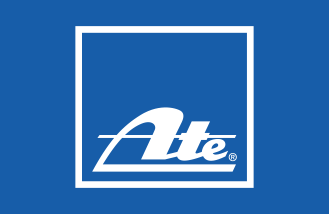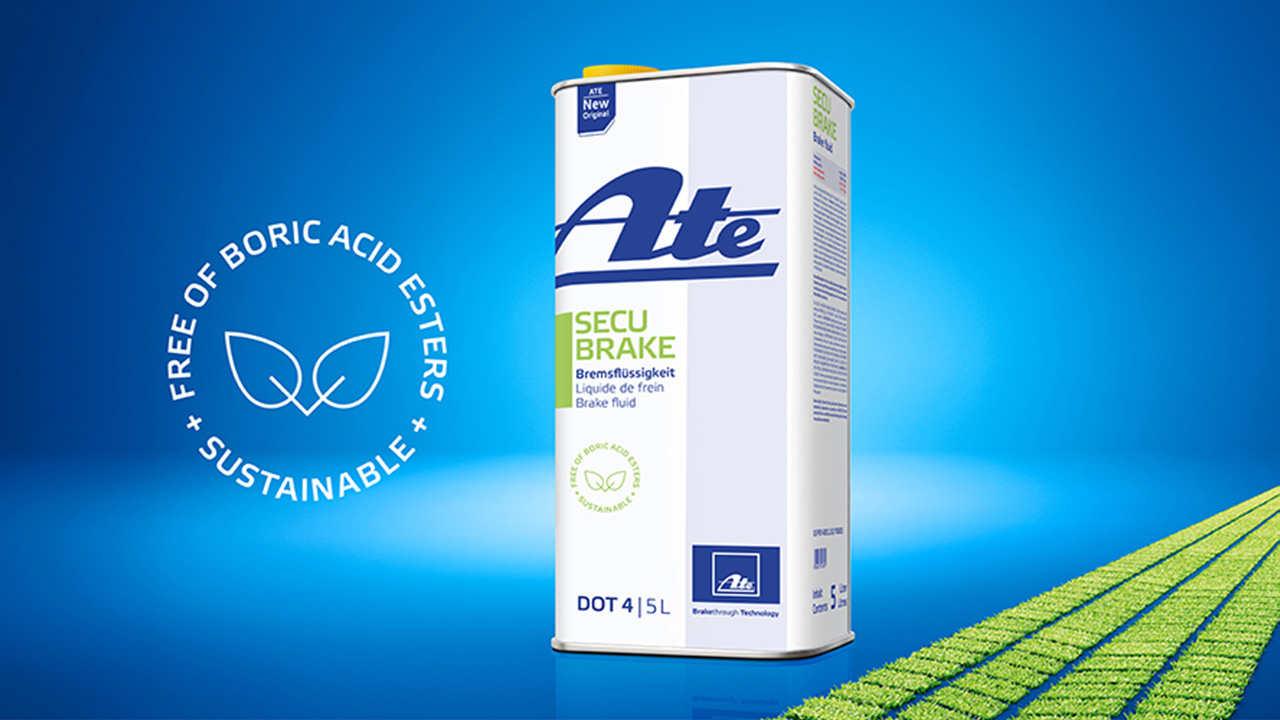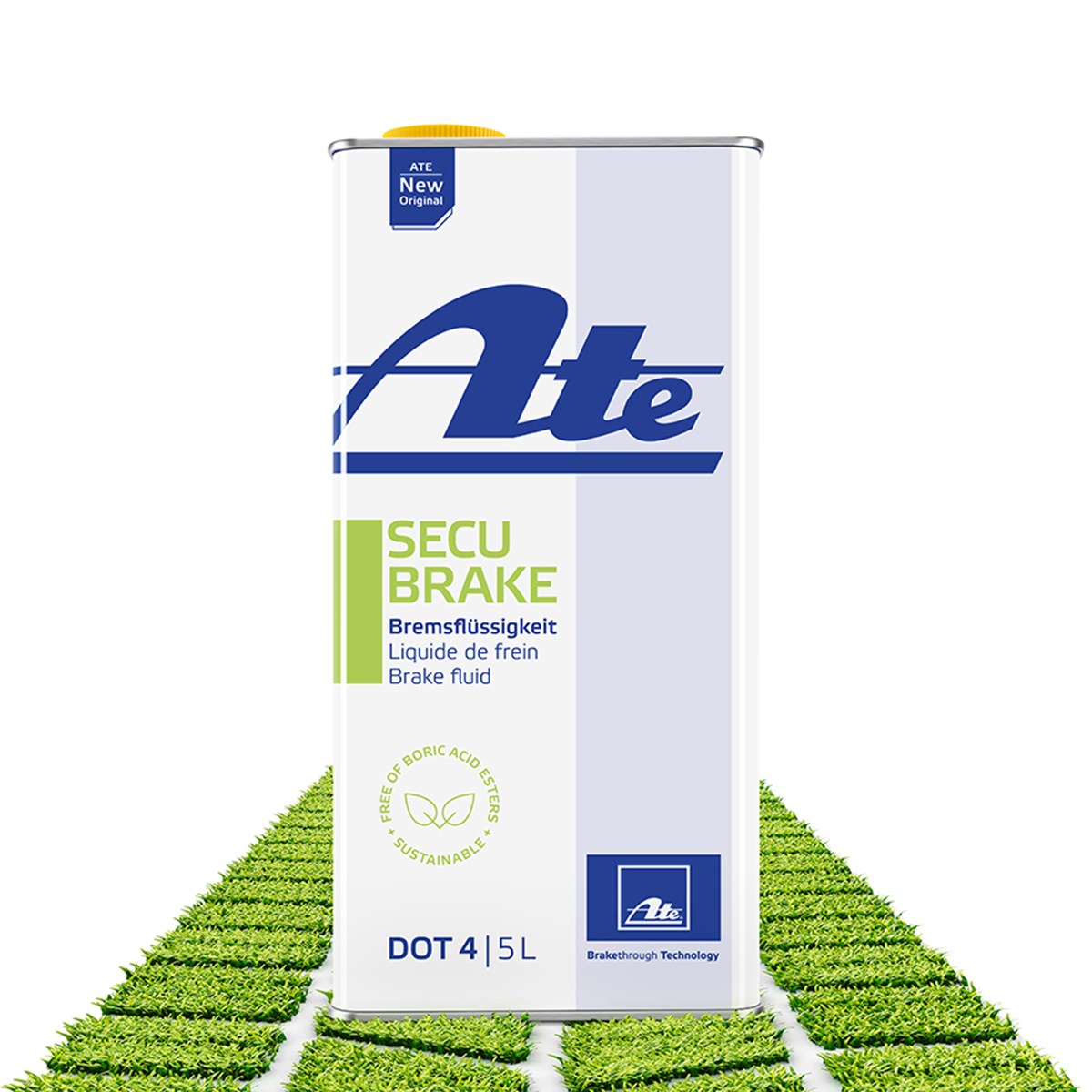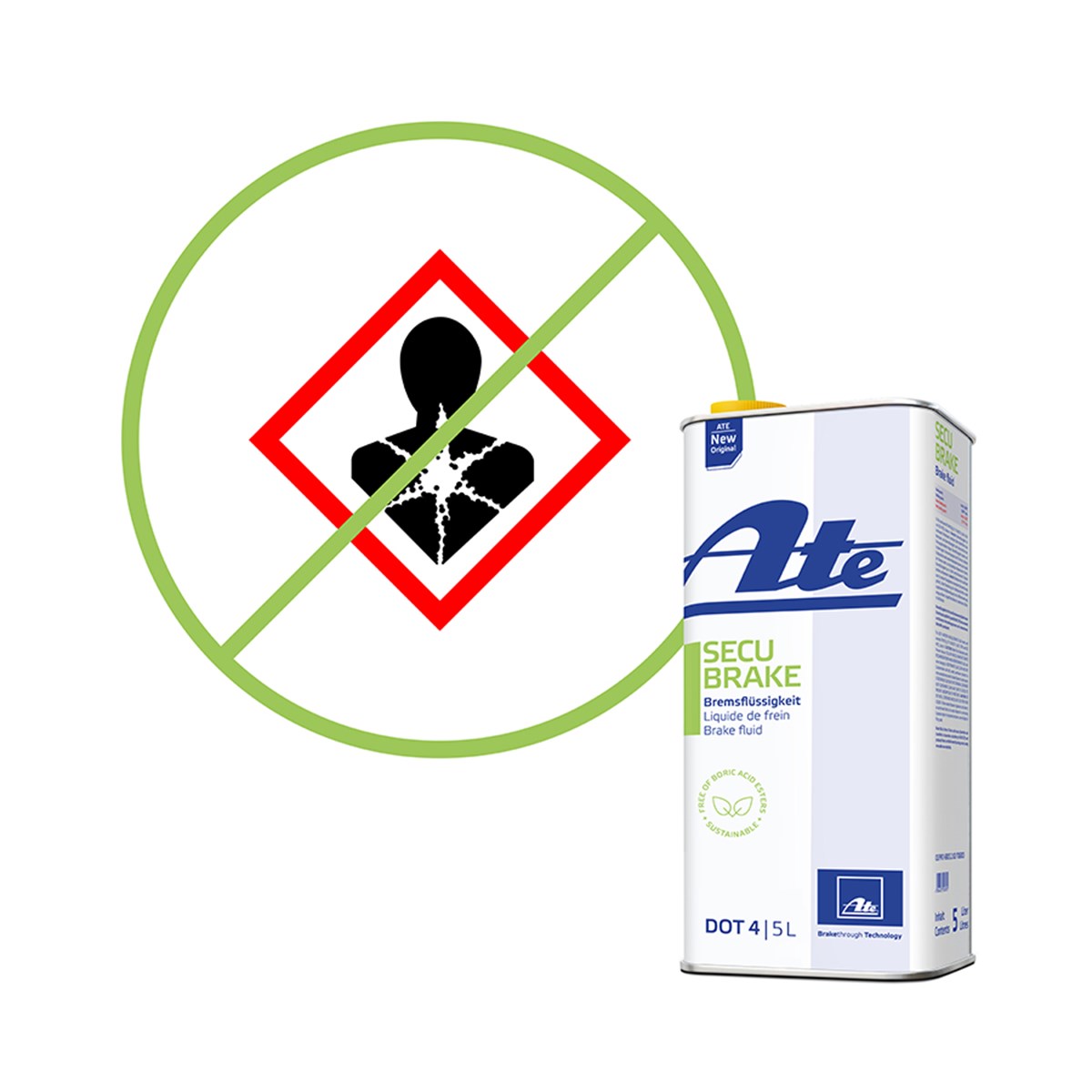ATE SecuBrake – without boric acid esters,
with renewable raw materials
ATE SecuBrake is a new, advanced brake fluid that combines sustainability and work safety. For the first time, it meets the legal requirements for a DOT 4 brake fluid without containing boric acid esters, and it is manufactured using a certified process with renewable raw materials.
COMMITMENT TO PROGRESS
ATE SecuBrake, which is free of hazardous materials subject to labelling requirements and produced with renewable raw materials, demonstrates ATE’s commitment to environmentally friendly mobility. This innovative brake fluid makes everyday workshop life much simpler because it requires no legal protection measures for handling and storing hazardous liquids.

FOR A SUSTAINABLE FUTURE
ATE SecuBrake is the first sustainable brake fluid to meet customer demands for environmentally friendly production. Certified and with a significantly improved ecological footprint, it points the way to a sustainable future. ATE SecuBrake appeals to new, environmentally conscious target groups and shows your commitment to sustainable mobility.
GET ON BOARD FOR ENVIRONMENTAL PROTECTION
Choose ATE SecuBrake for the sake of the environment.
Order now and get on board with the pioneer!


German Innovation Award 2025 Winner
Benefits for workshops
- Constituents not subject to labelling requirements
- Simple handling and storage
- Top quality guaranteed by regular checks
- Provision for possible stricter EU regulations
- Replacement for DOT 3 (rubber compatibility guaranteed), except at high double-digit minus temperatures (lower viscosity at –40 °C). Miscible with DOT 3, DOT 4 and DOT 5.1
Benefits for the environment
- Sustainable production
- Smaller carbon footprint
- Readily biodegradable
- Made in Germany
Further information on the production process
- The sustainable production process makes use of “green” carbon from natural organic waste (for example, from anaerobic digesters) and chemical conversion. ISCC Plus certification ensures a sustainable design for the entire process.
- The reduction in CO2 emissions is determined by the PCF value, which measures the climate impact of a product through the mass balance approach.




